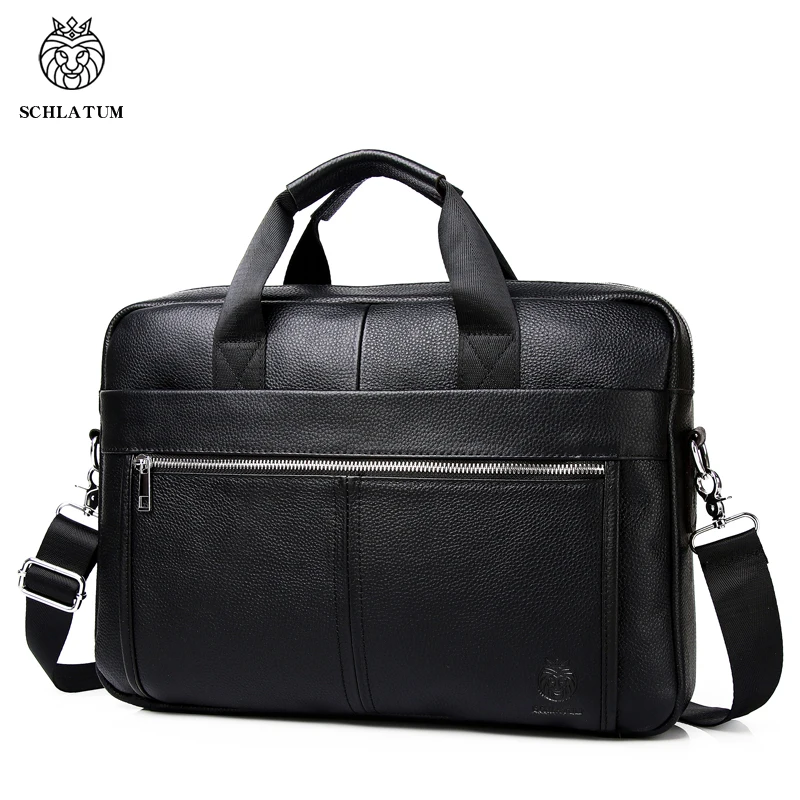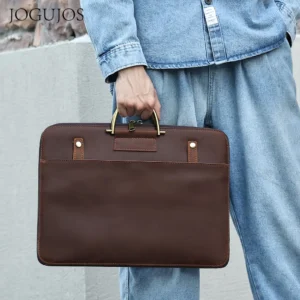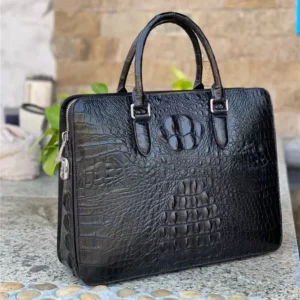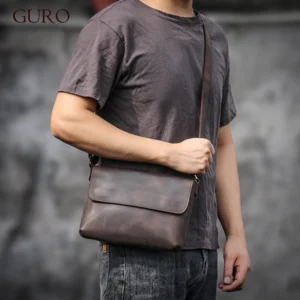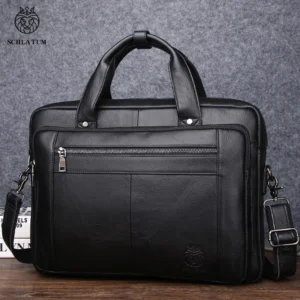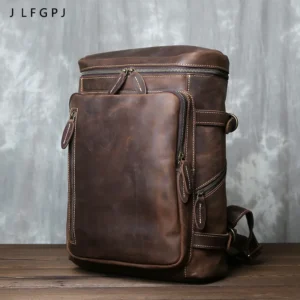Understanding Leather Quality: The Foundation of an Exceptional Briefcase
When investing in a briefcase, the quality of leather used is arguably the most critical factor determining both its appearance and longevity. A well-crafted leather briefcase isn’t just a container for your documents and devices—it’s a statement piece that represents your professional image and can potentially last for decades.
The “best” leather for a briefcase isn’t a one-size-fits-all answer. While full-grain leather is widely considered the highest quality option available, the ideal choice depends on your specific needs, preferences, and circumstances. Some professionals prioritize durability and patina development, while others may value water resistance or minimal maintenance requirements.
Key factors that determine leather quality include:
- Grain type (full-grain, top-grain, genuine, etc.)
- Tanning method (vegetable vs. chrome)
- Hide source and quality
- Processing techniques and finishing methods
- Thickness and cut location
Understanding these elements helps you make an informed decision when choosing timeless classic leather briefcases that align with your professional needs. The difference between high-quality and inferior leather is substantial—premium leather can develop character over decades, while lower-grade options might crack or peel within months.
A quality briefcase balances form and function, serving as both a practical tool for daily use and a refined accessory that enhances your professional presence. The right leather choice forms the foundation of this balance, which is why understanding different full-grain messenger bag options and other leather types is essential for making a wise investment.
Essential Leather Terminology: Decoding Industry Language
Before diving deeper into specific leather types, it’s important to understand the terminology you’ll encounter when shopping for a leather briefcase:
Grain Types:
* Full-grain: Contains the entire top layer of hide with natural markings; strongest and most durable
* Top-grain: Upper layer that has been sanded to remove imperfections; more uniform appearance
* Genuine leather: Made from lower layers of the hide; less durable than full or top-grain
* Bonded leather: Composed of leather scraps bonded together with adhesives; lowest quality
Tanning Methods:
* Vegetable-tanned: Uses natural tannins from plants; develops rich patina; environmentally friendly
* Chrome-tanned: Uses chromium salts; creates soft, water-resistant leather; faster production process
Other Important Terms:
* Patina: The desirable aging process that gives quality leather character and a unique appearance over time
* Pull-up leather: Treated with oils and waxes that lighten when stretched or bent
* Aniline leather: Dyed without surface coating to maintain natural appearance
* Semi-aniline: Light protective coating applied over dye
* Saffiano leather: Characterized by a cross-hatch pattern pressed into the leather
When choosing the perfect leather briefcase, understanding these terms helps you navigate marketing language that can sometimes be misleading. For instance, “genuine leather” sounds positive but actually indicates a lower-grade product compared to full-grain or top-grain options.
Full-Grain Leather: The Gold Standard for Briefcases
Full-grain leather represents the pinnacle of leather quality and is widely considered the best material for a premium briefcase. This leather includes the entire top layer of the hide with all its natural characteristics intact—no sanding or buffing to remove imperfections.
Why Full-Grain Excels for Briefcases:
- Unmatched Durability: The intact fiber structure provides superior strength and can last decades or even generations with proper care
- Distinctive Patina Development: Develops a rich, unique patina over time that tells the story of its use
- Natural Character: Contains natural markings and grain patterns that make each piece one-of-a-kind
- Breathability: Allows moisture to pass through, preventing interior dampness
- Investment Quality: Though initially more expensive, the exceptional longevity makes it cost-effective over time
Full-grain leather briefcases do require more maintenance than some alternatives. Regular conditioning is necessary to maintain suppleness and prevent drying. However, this investment in care pays dividends in the form of a briefcase that can remain functional and grow more beautiful for 20+ years.
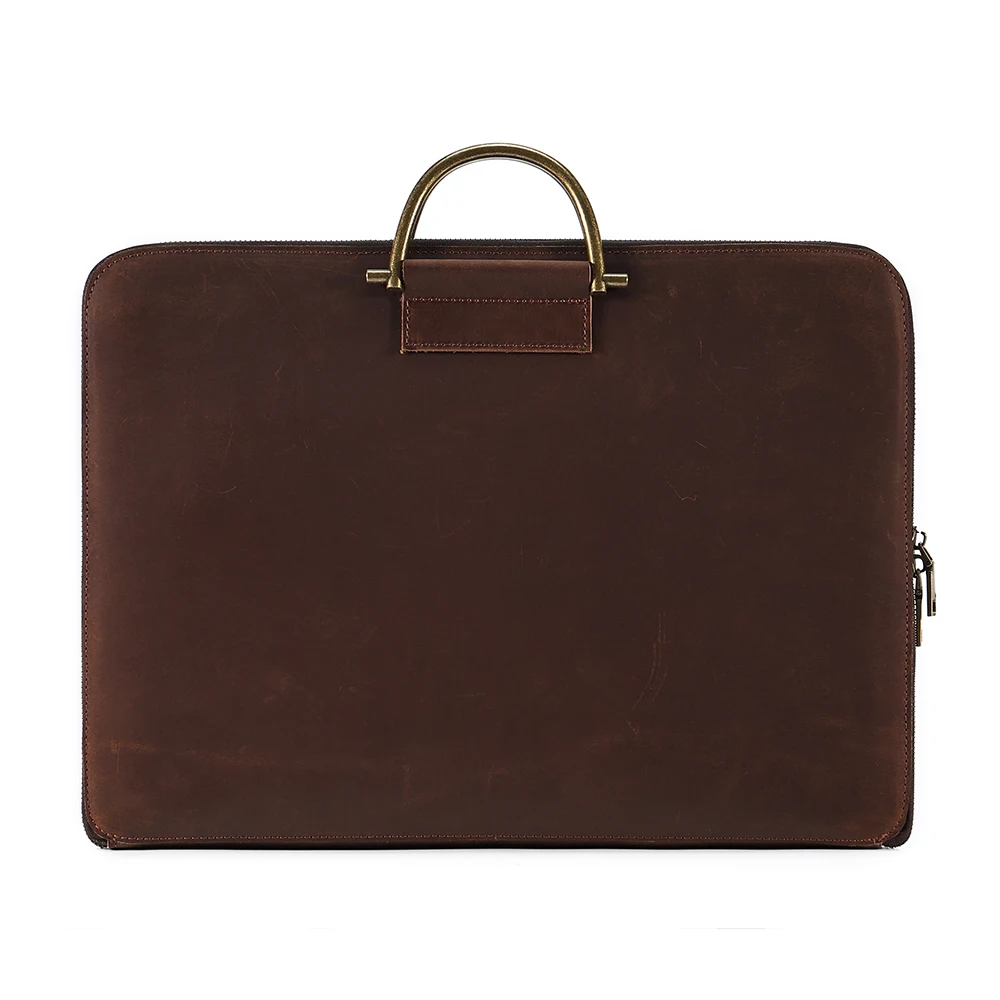
The natural imperfections in full-grain leather aren’t flaws but rather markers of authenticity and quality. These subtle variations in texture and color contribute to the distinctive character that makes classic leather briefcases so desirable among discerning professionals.
Top-Grain Leather: The Balance of Quality and Value
Top-grain leather offers an excellent middle ground between premium quality and practical value. This leather type is created by sanding away the very top surface of full-grain leather to remove imperfections, creating a more uniform appearance.
Key Characteristics of Top-Grain Leather:
- Strong Durability: While not as strong as full-grain, still offers excellent longevity
- Consistent Appearance: More uniform look with fewer natural variations
- Moderate Patina Development: Develops some character over time, though less distinctively than full-grain
- Lower Cost: Typically 20-40% less expensive than comparable full-grain options
- Easier Maintenance: The processed surface tends to be more stain-resistant
For many professionals, top-grain leather hits the sweet spot between quality and practicality. Its more uniform appearance makes it particularly suitable for formal business environments where consistency is valued. The surface treatment also provides some additional protection against stains and moisture.
Top-grain leather briefcase durability is impressive in its own right, with well-maintained pieces easily lasting 10-15 years of regular use. While it won’t develop the same rich patina as full-grain leather, it will still age gracefully and maintain a professional appearance throughout its lifespan.
Genuine Leather and Bonded Leather: Understanding Lower-Grade Options
Despite what the name suggests, “genuine leather” actually indicates a lower grade material in the leather hierarchy. Similarly, bonded leather represents the lowest tier of leather products. Understanding these options helps you avoid potential disappointment when investing in a briefcase.
Genuine Leather Realities:
- Made from the split layers beneath top-grain leather
- Significantly weaker fiber structure than full or top-grain
- Often heavily processed with sealants and paint to improve appearance
- Typical lifespan of 2-5 years with regular use
- Prone to peeling, cracking, and degradation over time
Bonded Leather Concerns:
- Constructed from leather scraps and shavings mixed with adhesives
- Contains only 10-20% actual leather content in many cases
- Extremely limited durability, often failing within 1-2 years
- Susceptible to peeling and flaking, especially at flex points
- Cannot be repaired once deterioration begins
When evaluating briefcases labeled as “genuine leather,” inspect them carefully for signs of excessive surface treatment or artificial grain patterns. The price is often a telling indicator—if a briefcase is marketed as leather but priced similarly to non-leather options, it likely uses lower-grade materials.
For ideal leather briefcase guidance, remember that these lower-grade materials might be acceptable for light, occasional use or when budget constraints are paramount. However, they rarely represent a good long-term investment for daily professional use.
Specialty Leather Types: Unique Options for Distinctive Briefcases
Beyond the standard leather grades, several specialty leathers offer unique characteristics that make them excellent choices for distinctive briefcases.
Bridle Leather
- Dense, firm leather traditionally used for equestrian equipment
- Treated with oils and waxes on both sides for exceptional durability
- Develops a beautiful patina with subtle color variations over time
- Offers exceptional structure and maintains shape extremely well
- Requires minimal maintenance beyond occasional conditioning
Saffiano Leather
- Recognized by its distinctive cross-hatch pattern pressed into the surface
- Highly scratch and water-resistant due to wax treatment
- Maintains a clean, structured appearance even with heavy use
- Excellent for formal business environments where consistency matters
- Requires very little maintenance, making it practical for busy professionals
Crazy Horse/Pull-Up Leather
- Full-grain leather treated with oils and waxes that create a “pull-up” effect
- Changes appearance when bent or scratched, creating a vintage look
- Develops unique patterns based on use, making each piece one-of-a-kind
- Self-healing minor scratches when warmed and rubbed
- Combines durability with distinctive, casual character
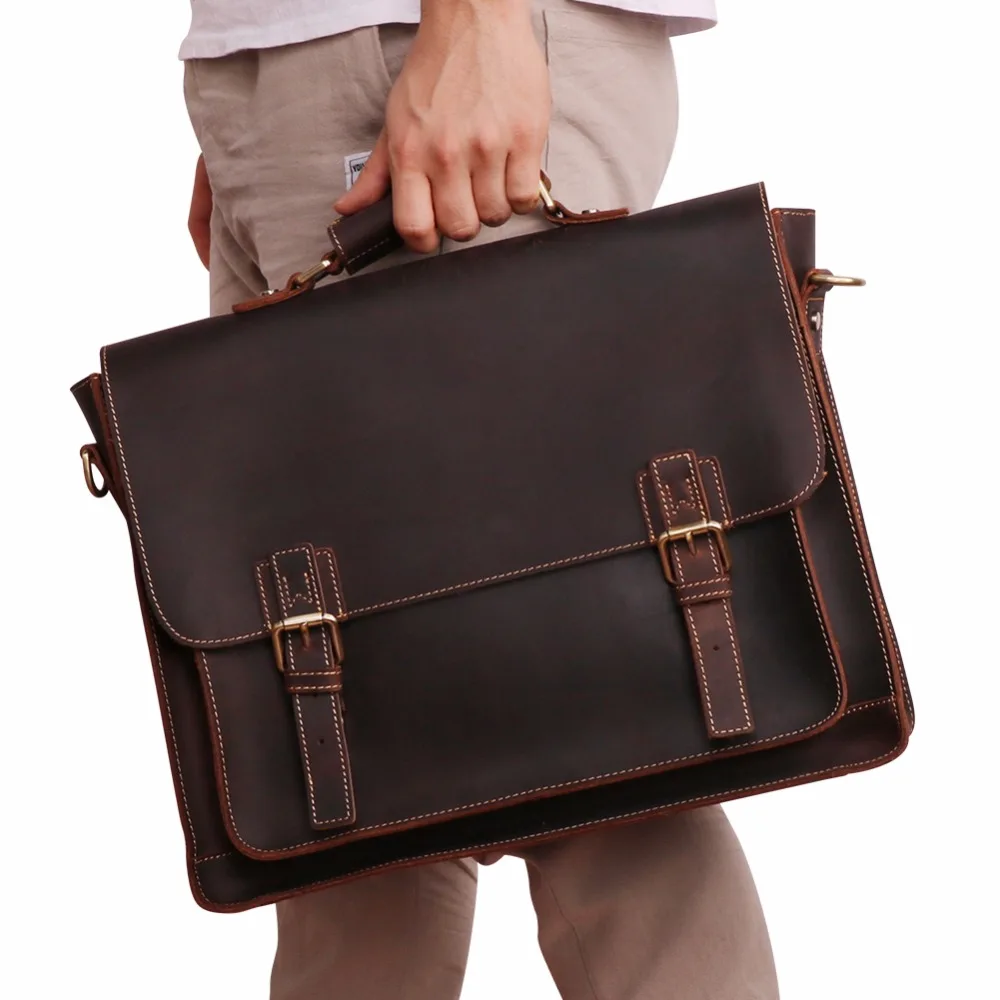
These specialty leathers offer distinctive alternatives to standard options, allowing you to select a briefcase with unique characteristics that align with your personal style. Crazy horse leather satchels in particular have gained popularity for professionals seeking durability with distinctive character.
Comparing Tanning Methods: How Processing Affects Your Briefcase
The tanning process—how animal hides are converted into leather—significantly impacts your briefcase’s characteristics. The two primary methods create distinctly different materials suited to different preferences and needs.
Vegetable Tanning
- Uses natural tannins extracted from tree bark and plant matter
- Creates firm, robust leather that develops a beautiful patina
- Produces warmer, richer colors that deepen over time
- Environmentally friendlier with biodegradable materials
- More susceptible to water damage but can be restored
- Takes longer to produce (weeks to months)
Chrome Tanning
- Uses chromium salts in the tanning process
- Creates softer, more flexible leather from the start
- Offers better water resistance and stain protection
- Allows for wider range of vibrant colors
- Faster production process (as little as one day)
- Less dramatic patina development over time
The tanning method affects not just how your briefcase looks when new, but how it will age and what kind of care it requires. Vegetable-tanned leathers generally need more protection from water and regular conditioning, while chrome-tanned leathers tend to be more forgiving of occasional neglect.
Understanding these differences helps you select a briefcase that matches both your aesthetic preferences and practical needs. Proper leather briefcase maintenance varies significantly based on the tanning method used, with vegetable-tanned options requiring more attentive care but often rewarding that effort with more distinctive aging characteristics.
The Definitive Comparison: Selecting Your Ideal Leather Type
To help you make an informed decision, here’s a comprehensive comparison of the major leather types used in briefcases:
| Leather Type | Durability (1-10) | Patina Development | Maintenance Needs | Relative Cost | Best For |
|---|---|---|---|---|---|
| Full-Grain | 10 | Excellent | Moderate-High | $$$$ | Long-term investment, natural character |
| Top-Grain | 8 | Good | Moderate | $$$ | Professional consistency, good value |
| Genuine | 4-5 | Minimal | Low-Moderate | $$ | Budget options, occasional use |
| Bonded | 2 | None | Low | $ | Very limited budget, temporary use |
| Bridle | 9-10 | Excellent | Moderate | $$$$ | Structure, formal elegance, longevity |
| Saffiano | 8 | Minimal | Very Low | $$$ | Low maintenance, scratch resistance |
| Crazy Horse | 9 | Distinctive | Low-Moderate | $$$ | Unique character, casual environments |
For maximum durability and a briefcase that becomes more beautiful with age, full-grain and bridle leathers stand above the rest. If minimal maintenance and consistency are priorities, Saffiano offers excellent performance. Those seeking unique character that tells a story might prefer Crazy Horse leather.
When comparing durable leather briefcase options, remember that higher initial cost typically correlates with longer lifespan—making premium options more economical when calculated as cost-per-year of use.
Beyond the Hide: Quality Indicators in Leather Briefcase Construction
Even the finest leather can’t compensate for poor construction. When evaluating a briefcase, consider these additional quality factors:
Hardware Quality
- Look for solid brass or stainless steel hardware instead of plated metals
- Quality zippers (YKK or RiRi) that run smoothly without catching
- Clasps and locks that operate precisely without gaps or misalignment
- Reinforced stress points where handles attach to the body
- Metal feet on the bottom to protect leather from surface contact
Stitching Excellence
- Tight, even stitches with no loose threads or puckering
- Double stitching at stress points and handle attachments
- Thread that matches or complements the leather color
- Consistent stitch density throughout the briefcase
Edge Finishing
- Beveled edges (slightly rounded rather than sharp)
- Smooth, sealed edges that resist fraying and wear
- Edge paint or burnishing that’s evenly applied
- No visible glue residue or rough spots
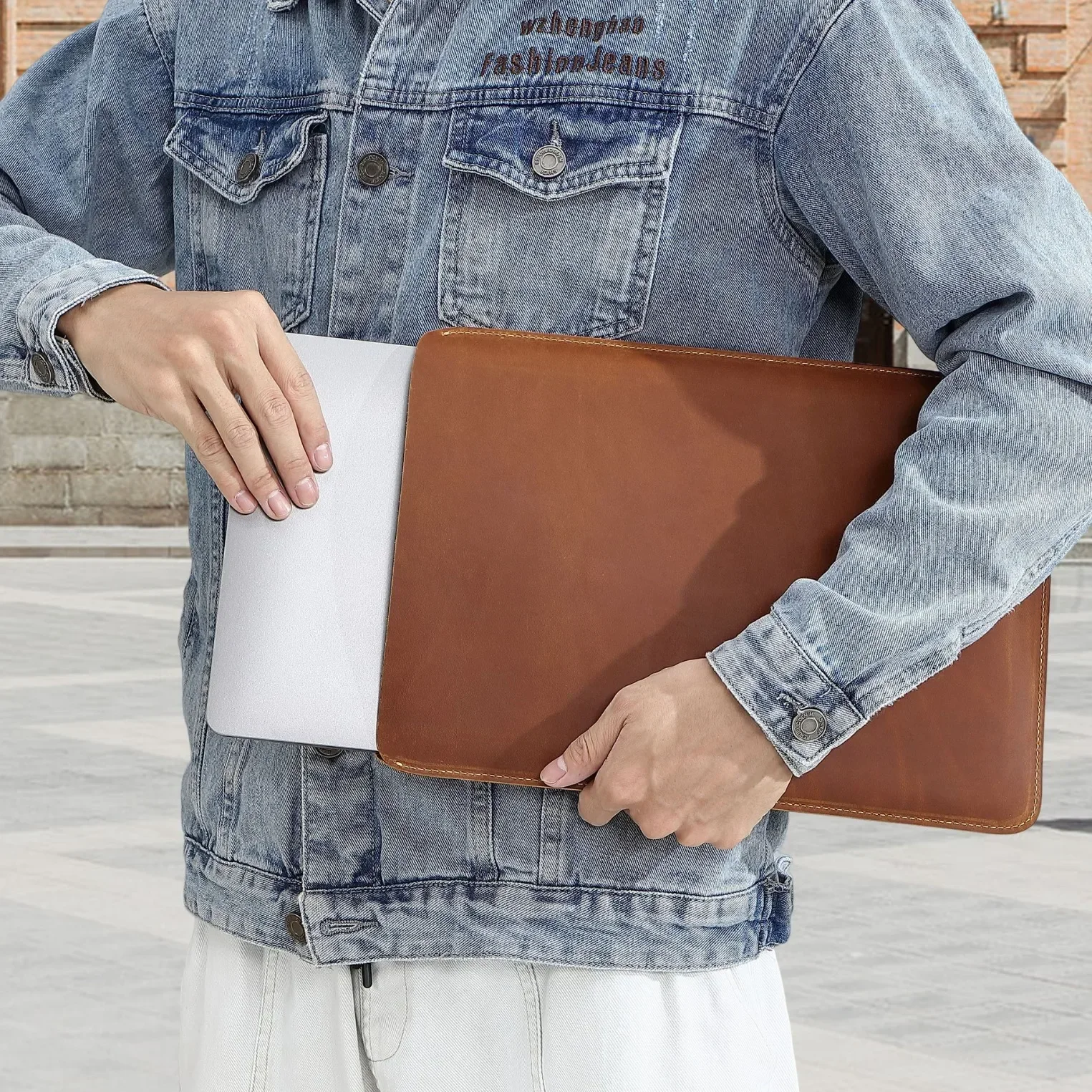
The best men’s classic leather briefcases feature not just premium leather but also meticulous construction details that ensure longevity. Remember that a briefcase is only as strong as its weakest component—excellent leather paired with poor hardware or stitching won’t stand the test of time.
How to Identify Quality Leather: A Practical Buyer’s Guide
Whether shopping online or in-person, these practical tips will help you identify quality leather and avoid inferior products:
Visual Assessment
- Look for natural variations in color and texture in full-grain leather
- Check for artificial uniformity that suggests heavy coating or correction
- Examine edge cuts—quality leather shows fibrous structure rather than smooth interior
- Natural leather darkens slightly where you touch it or apply pressure
Tactile Evaluation
- Quality leather feels warm and natural, not plastic-like or cold
- It should be supple but substantial, not flimsy or rigid
- Run your fingernail lightly across surface—quality leather shows subtle marks that fade
- Press on the leather—it should give slightly and then return to shape
Olfactory Test
- Real quality leather has a distinctive natural smell
- Chemical or plastic odors indicate heavy processing or synthetic materials
- The smell test is particularly important when evaluating full-grain messenger bags and other premium items
Red Flags in Product Descriptions
- Vague terms like “genuine leather” without specifying grain type
- “PU leather” or “vegan leather” without clear disclosure they are synthetic
- Unusually low prices for supposedly premium leather goods
- Lack of information about tanning methods or hide source
Quality leather has a distinctive look, feel, and smell that’s difficult to counterfeit. When combined with knowledge of leather types and construction methods, these sensory evaluations help ensure you’re investing in an authentic, high-quality briefcase.
Men's Classic Leather Briefcase, Slim Leather Laptop Briefcase, Slim Leather Portfolio Briefcase
$93.67 Select options This product has multiple variants. The options may be chosen on the product pageClassic Laptop Briefcase, Men's Classic Leather Briefcase, Slim Leather Attache Case
Price range: $353.50 through $360.81 Select options This product has multiple variants. The options may be chosen on the product pageBlack Leather Briefcase, Leather Document Bag, Men's Classic Leather Briefcase
Genuine Crocodile Leather Executive Briefcase with Password Lock – Premium Business Document Carrier$1,201.87 Select options This product has multiple variants. The options may be chosen on the product pageCrazy Horse Leather Satchel, Men's Leather Satchel, Men's Professional Leather Messenger, Vintage Style Messenger Bag
$132.70 Select options This product has multiple variants. The options may be chosen on the product pageBlack Leather Briefcase, Classic Laptop Briefcase, Men's Classic Leather Briefcase, Slim Leather Laptop Briefcase
$228.72 Select options This product has multiple variants. The options may be chosen on the product pageCrazy Horse Leather Satchel, Leather Laptop Satchel, Men's Leather Satchel
$304.47 Select options This product has multiple variants. The options may be chosen on the product page
Essential Care Practices: Maintaining Your Leather Briefcase Investment
Proper care significantly extends the lifespan of your leather briefcase while enhancing its appearance. Different leather types require specific maintenance approaches:
Basic Care Routine for All Leather Types
- Clean dust and dirt regularly with a soft, slightly damp cloth
- Allow wet briefcases to dry naturally at room temperature, away from heat sources
- Store in a breathable dust bag or pillowcase when not in use
- Keep away from direct sunlight to prevent fading
- Apply appropriate conditioner every 3-6 months depending on use and environment
Specific Care by Leather Type
- Full-Grain/Top-Grain: Condition regularly with quality leather cream; blot spills immediately
- Vegetable-Tanned: Apply leather protectant to guard against water; condition more frequently
- Chrome-Tanned: Requires less conditioning but benefits from occasional treatment
- Saffiano: Clean with mild soap and water; rarely needs conditioning
- Crazy Horse: Buff with soft cloth to refresh appearance; use specialized pull-up leather conditioner
Learning how to prevent scratches on leather briefcases not only maintains appearance but also prevents damage that could compromise structural integrity. Remember that different leathers respond differently to care products—always test any new product on an inconspicuous area first.
Which Leather is Truly Best for Your Briefcase? Final Recommendations
After examining all factors, here are targeted recommendations based on different priorities:
For Maximum Durability and Heritage Quality
Full-grain or bridle leather represents your best investment. These materials age beautifully, tell a story through their patina, and can last for decades. The initial cost is higher, but the price-per-year makes them economical long-term investments for daily professional use.
For Professional Appearance with Minimal Maintenance
Saffiano leather offers excellent scratch resistance, consistent appearance, and requires very little care. Its distinctive cross-hatch pattern remains professional while resisting wear, making it ideal for those who prioritize function and reliability.
For the Best Balance of Quality and Value
Top-grain leather delivers much of the durability of full-grain at a more accessible price point. With proper care, a top-grain briefcase can serve reliably for 10+ years while maintaining a professional appearance.
For Unique Character That Stands Out
Crazy Horse/Pull-up leather develops a distinctive patina that reflects its use history. Each briefcase becomes unique to its owner, making it perfect for those who appreciate individuality and character in their professional accessories.
For Environmental Considerations
Vegetable-tanned leather uses natural materials in its processing. Alternatively, for those avoiding animal products entirely, high-quality vegan leather briefcases have improved significantly in recent years, though they typically won’t match the longevity of premium animal leather.
The “best” leather for your briefcase ultimately depends on how you balance these factors against your budget and intended use. Consider how frequently you’ll use the briefcase, in what environments, and how long you expect it to last. A thoughtfully selected leather briefcase from Poise Porter isn’t just an accessory—it’s a professional companion that will serve you through countless meetings, presentations, and career milestones.
Frequently Asked Questions About Leather Briefcases
What does “Italian leather” really mean?
Italian leather isn’t a specific type of leather but refers to leather processed in Italy. While Italy has a strong tradition of quality leather craftsmanship, the term alone doesn’t guarantee quality—the grain type (full-grain, top-grain, etc.) is a more reliable indicator. Always look for specific leather qualities beyond the country designation.
How long should a quality leather briefcase last?
With proper care, a full-grain leather briefcase can last 20-30 years or more. Top-grain briefcases typically last 10-15 years. Genuine leather might last 3-5 years, while bonded leather often fails within 1-2 years. Regular conditioning and appropriate use significantly impact longevity.
Can leather briefcases be made truly waterproof?
No leather is naturally waterproof, though quality leather is somewhat water-resistant. Various treatments can improve water resistance, but making leather completely waterproof typically requires coatings that alter its natural characteristics. Quality leather can handle light rain when properly treated, but prolonged exposure should be avoided.
What’s the difference between a briefcase and a messenger bag?
Briefcases are structured, typically feature a handle for carrying, and often open like a suitcase. Messenger bags have a more casual design with a shoulder strap, flexible body, and a flap closure. Briefcases generally project a more formal professional image, while messenger bags offer more casual versatility.
Will a leather briefcase retain its value?
Premium briefcases made from full-grain leather by reputable manufacturers can retain significant value and sometimes even appreciate if well-maintained. Lower-grade leather briefcases typically lose value quickly. The brand, craftsmanship quality, and leather type all affect value retention.
How can I tell if a “leather” briefcase is actually synthetic?
Synthetic materials often have perfect uniformity, feel plastic-like or cold to the touch, and lack the natural smell of leather. The edge view is telling—real leather shows a fibrous structure, while synthetic materials have a uniform composition. Price can also be an indicator, as quality leather briefcases require significant investment.

